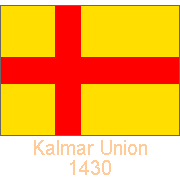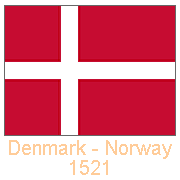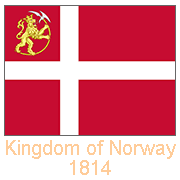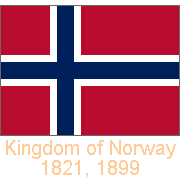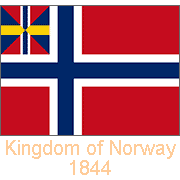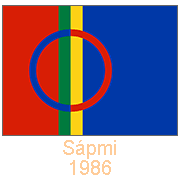Flags from Norway
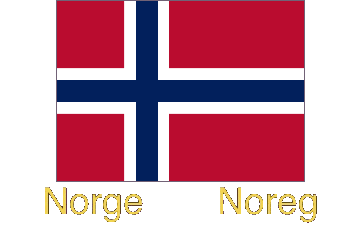
A Flag history of Norway
Norway’s flag is a Nordic or Scandinavian cross flag, a design common among all independent Nordic countries. The cross design, with the centre towards the hoist, represents Christianity. It was first described in 1748, a red flag with a white cross, as the Danish civil ensign. It was specified that the red fields at the hoist had to be square.
you may then send it as a postcard if you wish.
The design, however, may be much older. There are references in letters written in 1430 by Eric of Pomerania. He was king of all three Scandinavian countries (Denmark, Norway and Sweden), united in the Kalmar Union, describing a red cross on a yellow field. This “banner of the realms” would have been used between 1397 and 1521, when Sweden left the union.
After Sweden had left the Kalmar Union in 1521, Norway remained under Danish rule, and Denmark’s flag was used in Norway as well. In 1814 Denmark was forced to cede Norway to Sweden; it declared its independence and added an emblem depicting a golden lion with a sword on the upper hoist, to distinguish it from the Danish flag. In 1821 Norway, that had to accept a personal union with Sweden, adopted a unique merchant flag of its own, adding a blue cross inside the white cross on a red field. In 1844 the union badge, combining the flags of Norway and Sweden (a yellow cross on a blue field) was placed in the upper hoist.
In 1899 union with Sweden had become unpopular and the Norwegian parliament abolished the union badge from the national (merchant) and state flags, reverting to the design of 1821. In 1905 Norway achieved full independence, and its flag remained the same. The state and war flag, as in the other Nordic countries, has a “swallow-tail”.
The flag of Sápmi and the Sami people was recognised and inaugurated on 15 August 1986 by the 13th Nordic Sami Conference in Åre, Sweden. It was designed by the Coast Sami artist Astrid Båhl, the result of a competition. Its design has vertical bands in the colours red, green, yellow and blue, popular on Sami gáktis, the traditional dress. A blue and red ring, a motif derived from a sun/moon symbol appearing on many shaman’s drums, was added over the green and yellow stripes. The design was based on an earlier, unofficial flag, designed by Coast Sami artist Synnøve Persen in 1977, that only had the red, yellow and blue bands.


